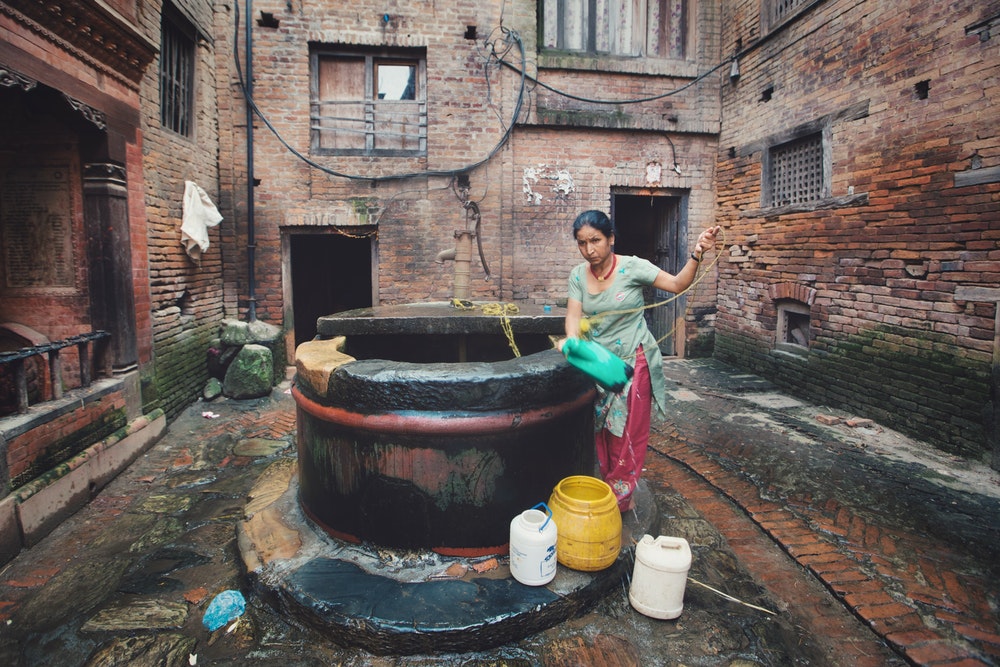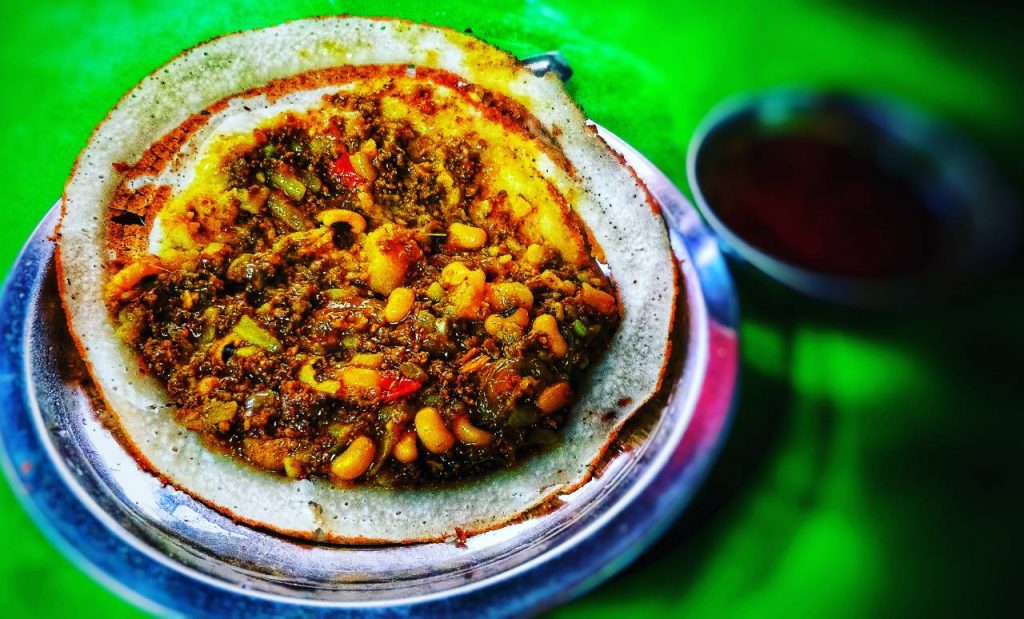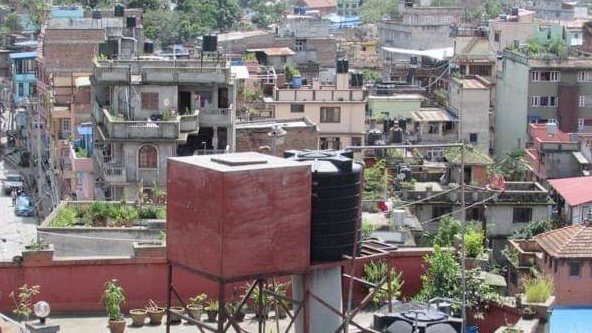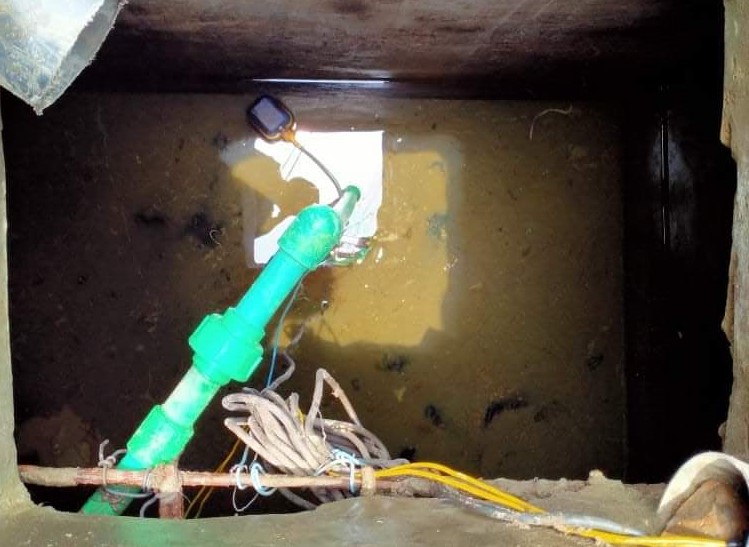
Spot a house in Kathmandu with a rooftop or underground tank. Easy! Right? Now, spot someone cleaning them. Not so easy task, right?
For Kathmanduites, either of the two kinds of tanks or both is a prerequisite. But, such tanks mushroomed only a couple of decades ago. If so, what about the time before that?
People used to go to lo hitis (stone spouts) or wells or use hand pumps to get their water. More interestingly, as a way of respecting and preserving them, the Newa community always had an annual cleaning ritual. Just near the onset of the monsoon comes Sithi Nakha. This festival, also called Kumar Shashthi (dedicated to Lord Kumar, son of Ganga) marks the start of the monsoon and the end of the festival season.
Today is that day. Hence, perhaps, it is now a good occasion to start better taking care of water sources inside your home today.
The festival and festivities

Sithi Nakha is widely popular as a festival for wo (lentil-based pancake) or chatamari (rice flour crepe). But, it is much more than a day for food, says Prakash Amatya, a technical advisor of Guthi, a non-profit organisation.
“Our ancestors were great technicians who redirected water from the sources to outlets like ponds and spouts using terracotta pipes, gravity-fed canals. And, annually there is a tradition to clean the outlets and sources,” he explains, “Many such traditions and techniques, as well as their reasonings, have been kept secret. Because of this secret, many traditions have never been documented. But, they have certainly been passed down from generation to generation.”
According to Amatya, who has been an advocate for water, sanitation and hygiene (WASH) for decades, cleaning of water sources is a more important part of Sithi Nakha than the eating culture. “It is as important that we maintain clean water sources and not just focus on eating healthy.”
“The annual cleaning culture was a smart, calculated choice based on the natural ecosystem. Naturally, on Sithi Nakha, it is said the water is at its lowest level, allowing people to clean water sources like wells. It was also a good time as water snakes (naags, if they were present) would also be at their lowest level, decreasing chances of the snakebites,” he adds.
Changed times and changed tales
But, today, Kathmandu is not a city of ponds and spouts like it was in the past. Going to spouts to get water has decreased drastically. With that, the cleaning of water sources annually has also subsided. But, even though the westernisation of lifestyle has been overpowering, Amatya insists that it is time to embrace the city’s old culture, and clean its water sources, if not at least the water tanks, at the locals’ individual houses.
“We should treat our water tanks the same way. And, at least, clean them once a year, to continue our culture and to maintain a healthy lifestyle,” he adds, stressing people should start from this year itself on Sithi Nakha which could be considered the local water festival or Water Conservation and Sanitation Day.

“World Environment Day (June 5) and Water Day (March 22) closely restating the same message were started only recently. We have many generations who have practised and believed in the culture. And, to get the same message, international organisations these days spend millions, but we have the culture that gives us the environment and guidelines, and they have been free,” says Amatya.
Of course, one can clean their water sources any time of the year. “But, stressing they clean it on Sithi Nakha can be a way for our generation to continue our tradition for future generations to learn,” he adds.
Sudan Panthi, another WASH expert and an official at World Health Organisation (WHO) Nepal, also seconds the idea. “Ideally, it is recommended that we clean the tanks twice a year: once before the monsoon starts, and again, after the monsoon,” he explains, “This is because the first rain brings down a lot of pollution and is contaminated. And, after the monsoon, the water can get murky, and contaminated. But, we can clean it at least once a year.”
Cleanliness matters
The monsoon season is the time when Nepal gets the most rain. After Melamchi’s drinking water started being supplied to Kathmandu households, the Kathmandu water tanks have been occupied. So, it will be a concern for many when to clean and where to keep the stored water.

According to Panthi, compared to the open-source water like rajkulo (with terracotta pipes), water in tanks of the households are less exposed to contamination. Hence, the household tanks might need less care. However, he stresses water security cannot be determined solely on that.
Contaminated water can cause various water-related diseases (such as hepatitis, and salmonellosis), water-wash diseases (such as luto, leech, and trachoma) and water-borne diseases (such as cholera, dysentery, polio, typhoid).
“Rooftop tanks also, if not covered properly, can lead to contamination whereas the underground tanks are susceptible to leakage from underground water pipes or sewage pipes leading to contamination,” Panthi says, “One has to be very careful of how the water looks.”
Since the Kathmandu Upatyaka Khanepani Limited supplies water to most houses of the Kathmandu valley, Panthi says the water supplied is safe to drink as it is processed in water treatment plants to maintain safety. “But, one cannot guarantee the contamination by the time water travels from the sources to households.”
It is the water one collects from deep-boring or tap that is risky, but surface water is even riskier. “Deep-boring water can have anaerobic bacteria or arsenic that can cause severe diseases including lung cancer. Surface water is riskier since more exposure has a higher chance of contamination and the presence of E. coli. The consumption of such water causes diseases.”
According to the WHO and other international guidelines, water is deemed safe to drink if there is an absence of E. coli/ pathogens and toxic chemicals such as arsenic. But many other kinds of parameters for water quality checks have not been prioritised, says Panthi.
Proper modi operandi

Water pollution, Panthi explains, can be of three types: microbiological pollution (the contamination by bacteria, virus or protozoa), chemical pollution (due to the contamination of chemicals like iron, lime, ammonia, nitrates, arsenic), and physical pollution affecting clarity, smell or pH level of the water. The third is the easiest to detect and can be taken as a primary indicator of contamination.
When it comes to household tanks and drinking water, Panthi further says the determining factor comes down to the faecal contamination, of whether human or other living beings and rodents or insects dying. “The best parameter of contaminated water, chemically, is the total dissolved solids (TDS). We can look at that the chemical evidence of what is mixed in the water,” he explains, “Another determining factor is the smell and colour (like when mixed with ammonia affecting the smell, and with iron resulting in redness). Though coloured and smelly water is not harmful to drink per se, it is just that people do not feel comfortable consuming the water.”
The microbiological pollution is rather hard to determine and needs to be tested.
These tests can be done at home as well, he says. “At home, one can purchase and do free residual chlorine (FRC) test that determines the level of chlorine, if added, in the water. Another easy test to do at home is the presence/absence (PA) vial test that determines the presence of any faecal coliform in the water. Both the tests are easily available in the market.”
Other than that, cleaning the water tanks twice is another way to maintain clean water. “But, we have to be very careful regarding what we leave behind when we clean it. It has to be clean and dry without residual,” Panthi says, “In comparison to black tanks, the steel tanks used today are easier as they flush out everything during cleaning. Afterwards, the water tanks should be disinfected with chlorine tablets or drops which is also easily available in the market.”
If one cannot check the water quality themselves, then they can request the officials from the Kathmandu Upatyaka Khanepani Limited (KUKL) or the Department of Water Supply and Sewerage Management (DWSSM) to check for them.
Other than that, the least one can do to avoid diseases is to filter or boil the water before drinking. And, even if that is difficult, they can leave the [clear] water bottles in the sun for seven to eight hours. The method is called solar water disinfection (SODIS).
________________________________________________________________________________________________________________
Originally published on June 5, 2022.




















